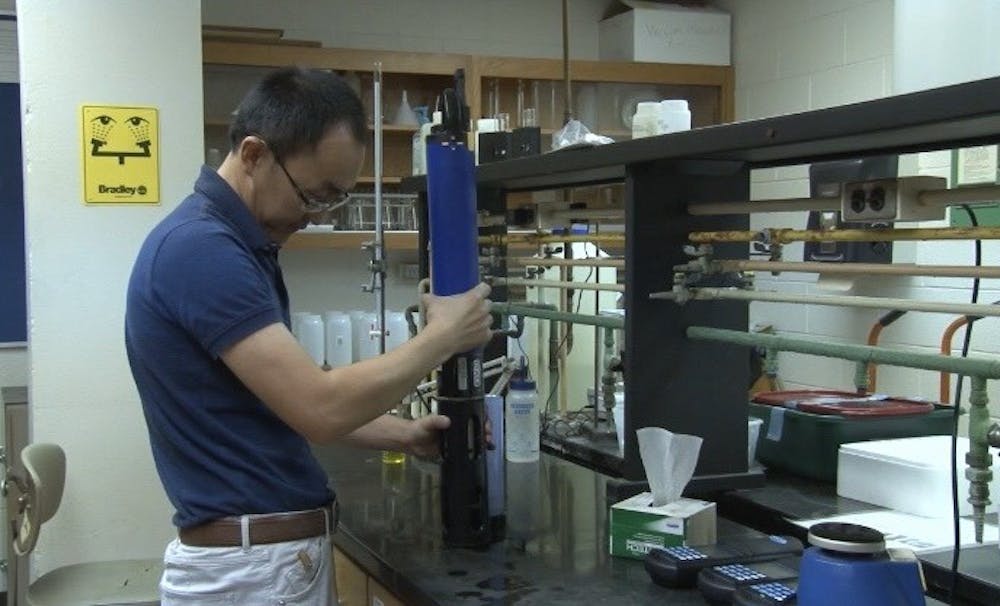Indiana is now one of many states dealing with toxic algae in the water. Because of the toxic algae discovery, water testing is underway to identify the spread of harmful algae.
In general, algae are a natural part of the aquatic ecosystems and not all types of algae are bad. But, Allison Rober, a Ball State biology professor says certain type of algae that isn’t always harmful, but if the conditions are right, the bacteria can harmful blue-green algae.
“There’s a really special type of Cyanobacteria, or blue-green algae, that produce toxins and those are what we call ‘toxin producing Cyanobacteria’,” Rober said. “These types of toxin producing cyanobacteria create the harmful algae blooms.”
Excess nutrients being released into the waterways is one of the conditions that can produce blue-green algae.
“The toxic cyanobacteria blooms are increasing in frequency and severity worldwide as a result of excess nutrient inputs to aquatic ecosystems,” Rober said.
In order to identify harmful algae in the water, Bangshuai Han, a Ball State water resource professor, tests the water. At this time, Han and Ball State students are working together on a project to reassess the water quality in the Prairie Creek Reservoir in Muncie. According to Han, the Reservoir is the secondary local drinking water source in Muncie.
“We have been taking basic water quality tests throughout the summer to test some basic parameters,” Han said.
According to the Department of Natural Resources, if harmful blue-green algae is identified in the water there are four different alert levels to identify the severity: low risk, advisory, caution and beach closed. Low risk is the most minor of all four. It recommends not drinking the water and showering after you swim.
Han believes there are short term and long term ways the community can reduce the risk of getting harmful blue-green algae.
“I think essentially we will need to control the nutrients sentiments we release into the water bodies because the nutrients are the key elements that makes algae bloom,” Han said.
Han believes having a water conservation plan is important for reducing nutrients being released into the water.
“We also need to provide incentives for our farmers to reduce fertilizer use,” Han said.
At this time, no harmful blue-green algae has been found in Delaware County. Water testing will continue to ensure the safety of the water.





